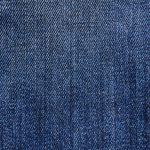Do you want to ensure that your fabrics are of the highest quality?
Understanding fabric quality parameters is crucial in making informed decisions. Factors such as durability, thread count, weave structure, strength, tear resistance, and colorfastness all play a key role in determining the overall quality of a fabric.
By evaluating these parameters, you can confidently choose textiles that meet your desired standards and ensure long-lasting satisfaction.
Table of Contents
Importance of Fabric Quality Parameters
When evaluating fabric, it’s important for you to consider the parameters that determine its quality. One crucial factor to consider is the fabric’s breathability. Breathability refers to the fabric’s ability to allow air and moisture to pass through it. Fabrics with good breathability are highly desirable as they help regulate body temperature and prevent the buildup of sweat and odors. Factors affecting fabric breathability include the type of fiber used, the weave or knit structure, and any additional finishes applied to the fabric.
The impact of fabric quality on customer satisfaction can’t be understated. When customers purchase clothing or other textile products, they want to ensure that they’re comfortable and can easily perform their daily activities. Poor fabric quality, such as a lack of breathability, can result in discomfort, excessive sweating, and even skin irritations. On the other hand, high-quality fabrics that offer good breathability provide a more pleasant wearing experience and contribute to overall customer satisfaction.
Factors Affecting Fabric Durability
When it comes to fabric durability, there are two key factors that play a crucial role.
The first is environmental conditions. Exposure to extreme temperatures, sunlight, moisture, and chemicals can all impact the durability of fabric.
The second factor is the manufacturing process. From the choice of materials to the techniques used, how fabric is made greatly affects its ability to withstand wear and tear.
Understanding these factors is essential in ensuring the longevity of fabric products.
Environmental Conditions and Durability
To ensure the longevity of your fabric, it’s crucial to consider the impact of environmental conditions on its durability.
One important factor to consider is moisture management. Excessive moisture can weaken the fabric fibers, leading to decreased durability and an increased risk of damage. It’s important to choose fabrics that have good moisture-wicking properties to help regulate moisture levels and prevent mold or mildew growth.
Additionally, environmental conditions can have a significant impact on sustainable fashion. Extreme temperatures, humidity, and exposure to sunlight can cause fabric colors to fade, affecting the overall aesthetic and lifespan of the garment.
Impact of Manufacturing Processes
Consider the impact of manufacturing processes on fabric durability, as they play a significant role in determining the quality and longevity of the material. Manufacturers employ various techniques and methods to ensure fabric durability while maintaining manufacturing efficiency and cost analysis.
Here are some factors that affect fabric durability during manufacturing:
-
Selection of raw materials: The choice of high-quality raw materials is crucial to ensure fabric durability.
-
Weaving or knitting techniques: The method used to create the fabric affects its strength and ability to withstand wear and tear.
-
Dyeing and finishing processes: Proper dyeing techniques and finishing treatments can enhance fabric durability.
-
Quality control measures: Stringent quality control checks at every stage of manufacturing help identify and rectify any fabric flaws.
-
Sustainable manufacturing practices: Adopting eco-friendly manufacturing processes can contribute to fabric durability while reducing environmental impact.
The Role of Thread Count in Fabric Quality
Understanding the significance of thread count is essential for evaluating fabric quality. The thread count refers to the number of threads woven per square inch of fabric. It plays a crucial role in determining the overall quality and feel of the fabric. A higher thread count generally indicates a finer and softer fabric.
The role of fabric finish in thread count is significant. A fabric with a higher thread count tends to have a smoother finish. This is because more threads are tightly woven together, resulting in a denser and smoother surface. On the other hand, a lower thread count may lead to a rougher texture, making the fabric less comfortable to touch.
Moreover, the impact of thread quality on the thread count can’t be overlooked. High-quality threads, such as long-staple cotton or silk, contribute to a higher thread count. These threads are more durable and can withstand the weaving process without breaking or fraying easily. In contrast, lower-quality threads may result in a lower thread count and a fabric that’s prone to pilling or tearing.
Therefore, when evaluating fabric quality, paying attention to the thread count is crucial. A higher thread count, combined with a smooth fabric finish and high-quality threads, usually indicates a superior fabric that’s more comfortable, durable, and luxurious.
Evaluating Weave Structure for Performance
You can assess fabric quality by examining the weave structure for optimal performance. Evaluating fabric performance and analyzing fabric construction are essential steps in determining the overall quality of a fabric. Here are some key factors to consider when evaluating the weave structure:
-
Thread count: While we discussed this in the previous subtopic, it’s worth reiterating that thread count plays a crucial role in fabric quality. A higher thread count generally indicates a tighter weave and better durability.
-
Weave type: Different weave types, such as plain, twill, or satin, have varying characteristics and performance attributes. Each weave type offers unique benefits and drawbacks, so it’s important to understand how they affect the fabric’s performance.
-
Fabric density: The density of the fabric refers to the number of yarns per unit area. A higher fabric density often indicates a more durable and long-lasting fabric.
-
Weave stability: The stability of the weave is crucial for maintaining the fabric’s shape and preventing distortion. A stable weave ensures that the fabric retains its structure even after repeated use and washing.
-
Weave uniformity: A uniform weave with consistent yarn tension and spacing indicates better quality. Any irregularities or inconsistencies in the weave may affect the fabric’s performance and longevity.
Understanding Fabric Strength and Tear Resistance
When it comes to fabric quality, understanding the strength and tear resistance is crucial. You need to know how durable the fabric is and how it will hold up over time.
Testing methods can help assess these factors, giving you confidence in the fabric’s performance. The strength and tear resistance of a fabric directly impact its lifespan and the longevity of the products made from it.
Importance of Durability
Fabric durability is a key factor in ensuring the long-lasting quality of a garment. It’s essential to consider the strength and tear resistance of the fabric.
When it comes to the importance of sustainability, durable fabrics play a crucial role. They reduce the need for frequent replacements, contributing to a more sustainable fashion industry.
In addition, fabric durability has a direct impact on consumer satisfaction. A durable garment not only lasts longer but also withstands everyday wear and tear, maintaining its shape, color, and overall appearance. This leads to happier customers who feel they’ve made a worthwhile investment in their clothing.
Therefore, when evaluating fabric quality, it’s imperative to prioritize durability to meet both sustainability goals and consumer expectations.
Testing Methods Explained
To gain a better understanding of fabric strength and tear resistance, it is important to familiarize yourself with the testing methods used. Fabric performance analysis is crucial in determining the quality and durability of fabrics. Various testing methods are employed to assess fabric strength and tear resistance. These methods involve subjecting the fabric to different forces and measuring its response. The results obtained help in evaluating the fabric’s ability to withstand stress and strain. A testing methods overview is provided in the table below to give you an idea of the different techniques used in fabric analysis. Familiarizing yourself with these testing methods will enable you to make informed decisions when it comes to selecting fabrics for various applications.
| Testing Method | Description | Purpose |
|---|---|---|
| Grab Test | Measures the maximum force required to break a fabric specimen in a specific direction | Evaluates the fabric’s resistance to tearing |
| Strip Test | Determines the force required to tear a fabric along a specific length | Assesses the fabric’s ability to withstand tearing forces |
| Bursting Strength Test | Measures the maximum pressure a fabric can withstand before it bursts | Determines the fabric’s resistance to bursting |
| Tensile Strength Test | Determines the maximum force a fabric can withstand before it breaks | Evaluates the fabric’s ability to resist stretching and pulling forces |
| Tongue Tear Test | Measures the force required to propagate a tear in a fabric using a tongue-shaped probe | Assesses the fabric’s resistance to tearing and the ability to withstand stress concentration at the tear edge |
Impact on Product Lifespan
To understand the impact of fabric strength and tear resistance on the lifespan of a product, it’s important to consider how these parameters affect the durability and longevity of fabrics. Here are five key points to consider:
-
Fabric strength is crucial for product durability. A fabric with high strength can withstand regular wear and tear, ensuring that the product lasts longer.
-
Tear resistance is equally important. Fabrics that are resistant to tearing are less likely to develop holes or rips over time, thus increasing the lifespan of the product.
-
A stronger fabric can handle more stress and strain without breaking or deteriorating. This means that it can withstand repeated use and washing, resulting in a longer lifespan.
-
Fabrics with lower strength and tear resistance are more prone to damage and may require frequent repairs or replacements, reducing the overall durability of the product.
-
A longer fabric lifespan directly translates to a longer product lifespan, saving you money in the long run and reducing waste.
Significance of Colorfastness in Textile Products
Ensuring colorfastness is essential for textile products to maintain their vibrant hues and preserve their visual appeal over time. Colorfastness refers to the ability of a fabric to retain its color despite exposure to various external factors. One of the factors that can affect colorfastness is washing. When textile products are subjected to frequent washing, the dyes used in the fabric may fade or bleed, resulting in a loss of color intensity. This can diminish the overall appearance and attractiveness of the product. Therefore, it’s crucial for manufacturers to use dyes that have high colorfastness properties to ensure that the colors remain vibrant even after multiple washes.
Another factor that can impact colorfastness is sunlight. Prolonged exposure to sunlight can cause the colors in textile products to fade or change. UV radiation from sunlight can break down the dye molecules in the fabric, leading to a loss of color intensity. This is especially true for products that are used outdoors or exposed to direct sunlight for extended periods. To mitigate this issue, manufacturers can use UV-resistant dyes or apply special coatings to protect the fabric from the harmful effects of sunlight.
Impact of Fabric Quality Parameters on Decision-Making
When considering fabric quality parameters, you should take into account their impact on your decision-making process. The quality of fabric can greatly influence consumer choices and have significant economic implications. Here are five reasons why fabric quality parameters matter:
-
Durability: Fabrics that are of higher quality are often more durable, meaning they’ll last longer and provide better value for your money. This can save you from having to replace garments frequently, resulting in long-term cost savings.
-
Comfort: Fabrics that are of lower quality may be uncomfortable to wear, leading to dissatisfaction and a reluctance to make future purchases from that brand or retailer. On the other hand, high-quality fabrics can enhance the overall comfort and wearability of a garment, increasing customer satisfaction.
-
Appearance: Fabric quality directly affects the appearance of clothing items. High-quality fabrics tend to have better color retention, less pilling, and a smoother texture, resulting in garments that look more appealing and well-maintained.
-
Reputation: Brands that consistently use high-quality fabrics earn a reputation for producing garments that are well-made and long-lasting. This can lead to increased customer loyalty and positive word-of-mouth, ultimately driving sales and revenue.
-
Sustainability: Consumers are becoming increasingly conscious of the environmental impact of their purchasing decisions. Fabrics that are made from sustainable materials and manufactured using eco-friendly processes can attract environmentally conscious consumers, contributing to the brand’s reputation and marketability.
Considering these factors, it’s evident that fabric quality parameters play a crucial role in decision-making, influencing consumer choices and having economic implications for both consumers and businesses.
Frequently Asked Questions
How Do Fabric Quality Parameters Affect the Comfort of the Textile Products?
Fabric quality parameters directly impact the comfort of textile products. The fabric composition and manufacturing techniques determine factors like softness, breathability, and durability, which ultimately affect how comfortable the product feels against your skin.
Can Fabric Quality Parameters Impact the Longevity of the Textile Products?
Fabric quality parameters can impact the longevity of textile products. They directly affect the durability and overall quality of the fabric. By ensuring high-quality parameters, you can enhance customer satisfaction and increase the lifespan of the products.
Are Fabric Quality Parameters the Same for All Types of Fabrics?
Fabric quality parameters vary among different fabric types. These parameters play a crucial role in the manufacturing process. Understanding and ensuring the right fabric quality parameters are met are essential for producing high-quality textile products.
How Do Fabric Quality Parameters Affect the Cost of Textile Products?
Fabric quality parameters directly affect the price of textile products. When fabric quality parameters are high, the product becomes more durable and thus, the price increases. Therefore, fabric quality parameters are crucial in determining product cost.
Are Fabric Quality Parameters Regulated by Any Industry Standards or Certifications?
Industry standards for fabric quality parameters ensure consistency and reliability in textile products. Fabric quality certifications validate that the materials meet specific criteria, providing assurance to consumers and promoting transparency in the industry.
- Can You Get Organza Wet? - April 23, 2024
- Why Is Organza so Popular? - April 23, 2024
- What Do You Wear With Organza? - April 23, 2024





